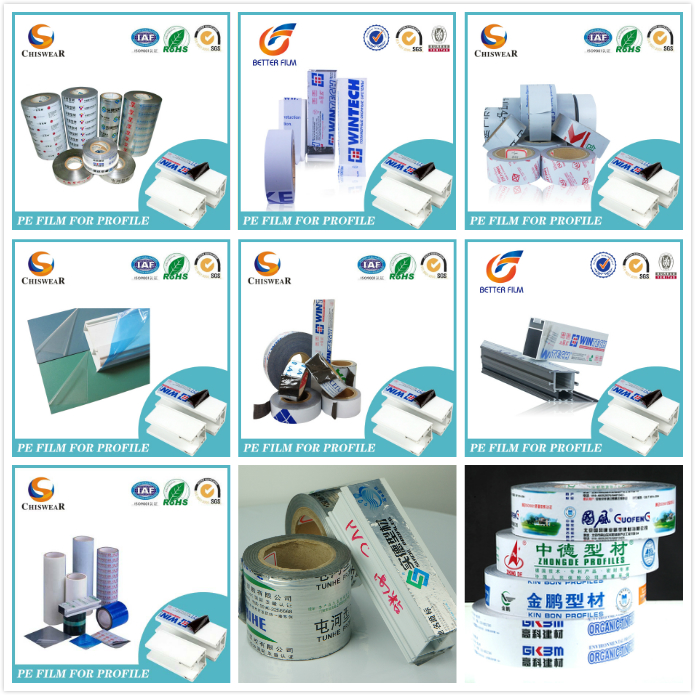Table of Contents
- Advantage Analysis of Biodegradable Protective Films
- Expanded Application Areas
- Market Potential and Customer Acceptance
- Conclusion
- References
Meta Description
Learn about the thriving industry of biodegradable films and how it is contributing to reducing plastic waste, enhancing sustainability, and balancing functionality with eco-friendliness.
Body
Irrespective of the industry you are dealing in, there has been a significant shift in the behavior of both the buyers and manufacturers. The biodegradable alternatives for the raw-materials are becoming a preferred choice. Thanks to the unprecedented environmental consciousness, innovations in technology and material sciences, we have found ways to replace harmful, non degradable materials with the harmless, rather enriching ones.
This surging demand has also led to a change of preferences in the protection film industry as well. With the aim of reducing toxic plastic waste, the protective film industry prefers to produce biodegradable films instead of non-degradable films. These newer alternatives are a desirable combination of functionality and environmental safety. Let us have a look at how these films are contributing towards a more sustainable environment and reducing resource depletion and what are their future prospects.

Advantage Analysis of Biodegradable Protective Films
Biodegradable protection films have a set of advantages for the planet that have made them immensely popular. Let us have a look at what these films have to offer.
Environmental Protection
The non-plastic plant-based protection films like those made with starch or cellulose decompose naturally. They turn into carbon dioxide, water, or biomass instead of leaving long-lasting marks on the planet and littering it with non-degradable plastic. Hence, it contributes towards environmental stewardship and saves the planet from everlasting plastic. Above all, they help protect marine life and terrestrial life from microplastics, a major disruptor of the ecosystem and food cycle.
Reduction in Plastic Waste
Since the biodegradable protection films degrade naturally with time, they do not burden the landfill sites with heaps of plastic that needs to be recycled. Moreover, it also mitigates the risk of leaching into the surrounding soil and waters. Biodegradable films rather contribute to enriching the soil with nutrients that help in soil fertility.

Technological Innovation
Technological advances, especially in material blends have given way to enhanced durability. For example, blending PLA with other degradable polymers like PBAT improves durability and flexibility. Similarly, advanced techniques and materials have also enhanced the temperature resistance, UV resistance, and moisture resistance of the films making them more capable of protecting the products for extended periods and under a variety of environmental conditions.
Expanded Application Areas
Using technological innovations, desired properties can be induced in the biodegradable protection films depending on the intended use. This has resulted in expanded application of these films across various industries.
Food Packaging
As the eco-friendly protective films are made using natural materials and there are minimal chemicals used in their composition, these films are ideal for food industry. The chances of contamination with these films are minimal. These are being increasingly used in the healthcare and food industries due to their resistance to microbial growth.
Agricultural Coverage
Mulching films made with degradable materials are being used to enhance crop production and cut down on chemical usage. These films help retain moisture in the soil leading to reduced usage of irrigation water and improved crop quality. Moreover, they prevent the growth of unwanted weeds, without damaging the soil as it is done by chemical-laden mulching films. By effectively mitigating the risk of pests’ growth, these films also help reduce the usage of pesticides and also save costs.
Industrial Packaging
Industries today are increasingly switching to the use of eco-friendly protective films. This not only helps reduce the carbon impact but also ensures that strict industrial standards are being met for sustainable production. These films are designed to strike a balance between functionality and adaptability to the evolving standards for environmental protection.
Market Potential and Customer Acceptance
Another reason for the increased use of biodegradable protective films is the positive market indicators. Increasingly environment environment-conscious consumers have led to an increase in the demand for eco-friendly protective films. Here is how changing market trends have shaped the preferences.
Market Growth Forecast
We have seen a continuous pattern of increase in the demand for eco-friendly consumer goods. This continuous hike in demand has played in favour of the adoption of ecologically harmless raw material by manufacturers, including the manufacturers of protective films.
The positive market indicators have encouraged the companies to replace toxic, non-degradable materials with natural ones that give away soil-enriching nutrients upon getting decomposed.
Enhanced Customer Awareness
Never has there been more awareness about the urgency of resolving this issue than it is today. Masses are more aware than ever before that each one of them have a part to play in reducing their carbon footprints. With this unprecedented increase in awareness, people are even ready to pay extra for products made with renewable materials. This has become a leading reason in convincing businesses to make a major shift towards using nature-based, non-synthetic, and recycled products.
Conclusion
Eco-friendly protection films have become immensely popular as manufacturers and users realize they have duty towards making this planet a better place for the coming generations. Technological and material science developments have made it possible to create environmentally friendly films that successfully combine sustainability and usability. Furthermore, severe laws set by governing bodies and government bans on plastic have fostered an environment that is favorable to the development of non-plastic alternatives. Biodegradable protective coatings seem to have a very bright future.
References
- https://www.vedantu.com/chemistry/biodegradable-and-non-biodegradable#:~:text=Biodegradable%20waste%20is%20decomposed%20and,Biodegradable%20waste%20is%20often%20collected
- https://www.breastcancer.org/risk/risk-factors/exposure-to-chemicals-in-plastic#:~:text=Research%20suggests%20that%20all%20plastics,may%20cause%20cancer%20in%20people.
- https://chidecor.com/product-category/protective-film
- https://chidecor.com/product









